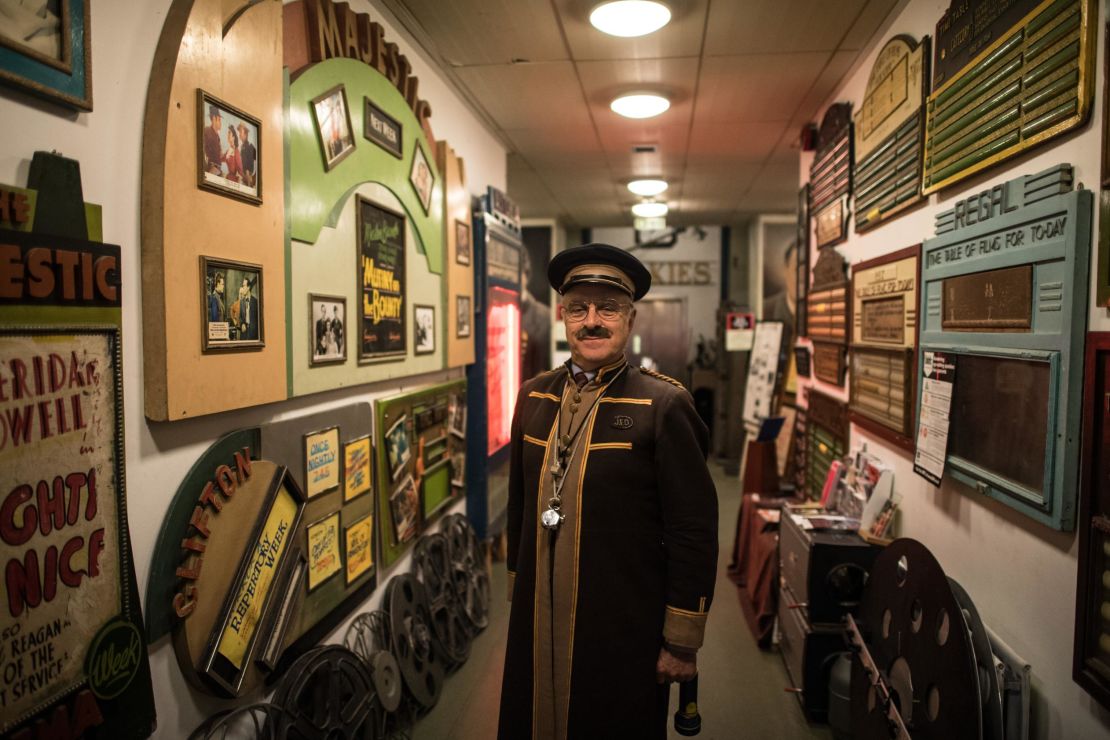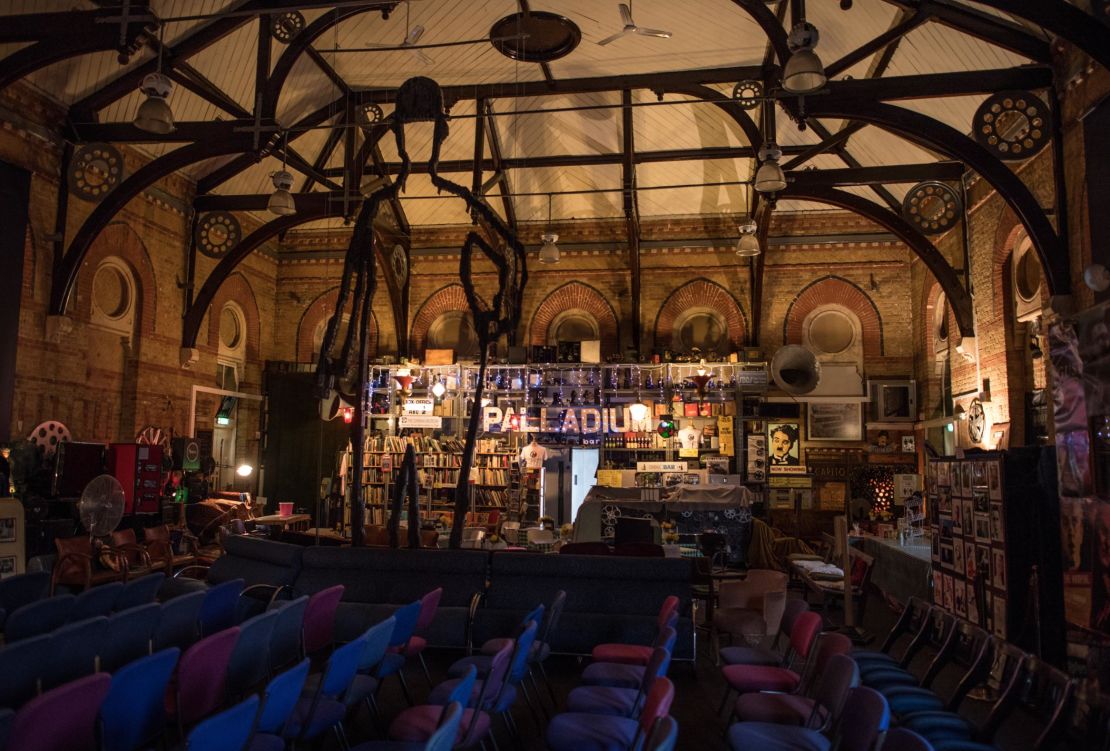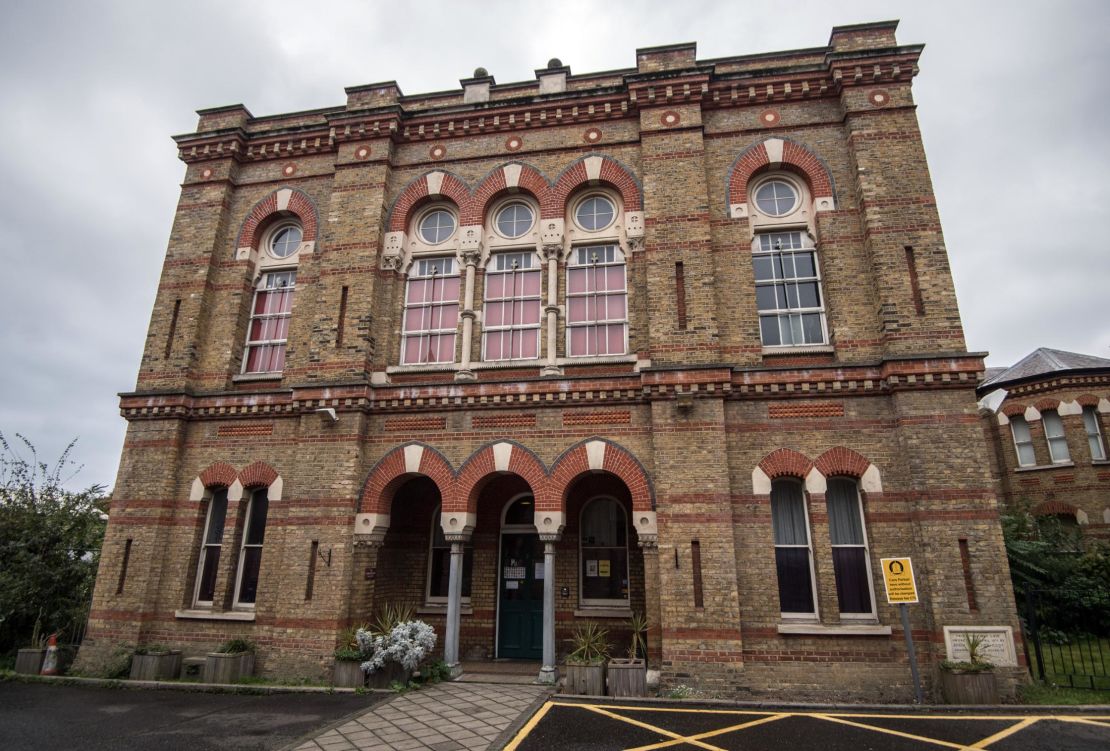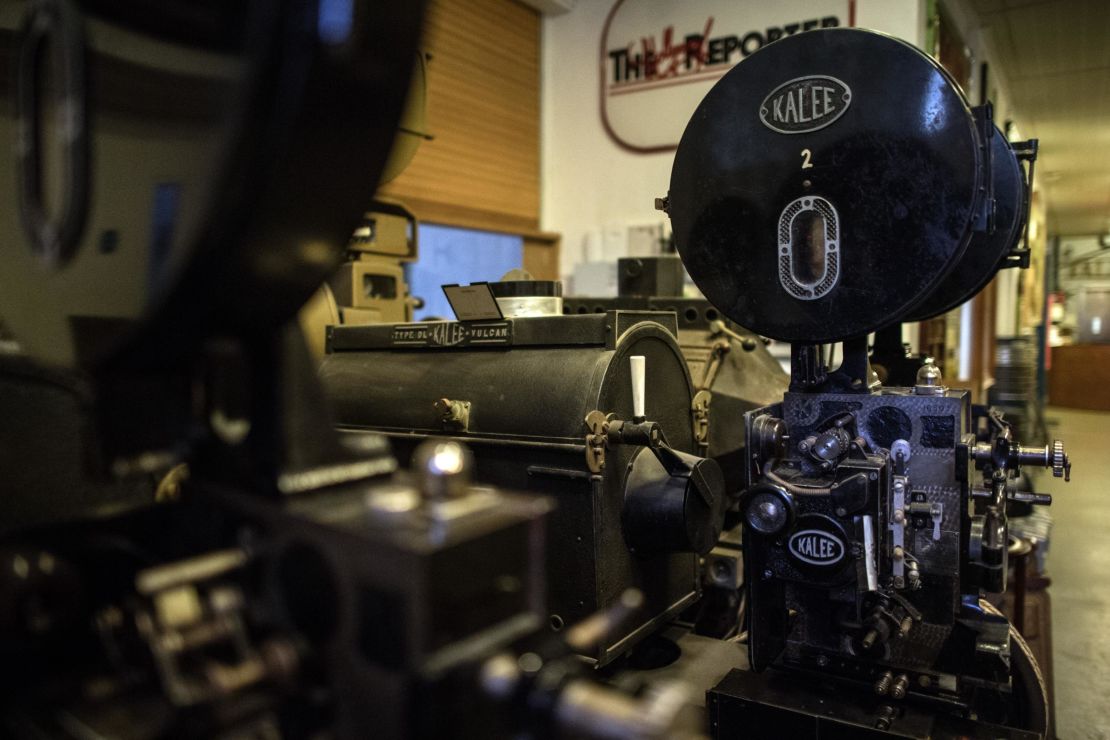Martin Humphries and Ronald Grant started raiding demolition sites in 1979. Single-screen cinemas were being torn down across London to make way for the multiplex era, and the two cinephiles were unwilling to let them vanish without trace.
Over a five-year spree, they bribed demolition teams to allow them into the condemned cinemas and plundered everything that wasn’t nailed down – and plenty that was. The assignments were thrilling and often dangerous.
“Sometimes the cinemas were in a terrible state, sometimes they were partly demolished,” recalls Martin Humphries. “We had to indemnify ourselves and wear hard hats, but we generally got permission if we gave the men £20.”
Grant and Humphries quickly ran out of space in their apartment. They took their treasures on the road with a series of temporary exhibitions and supplied artifacts to the now-defunct Museum of the Moving Image before finding the perfect home.
Grant was taking part in a Charlie Chaplin walk when he saw the old Lambeth Workhouse building where the Little Tramp once lived as an impoverished child. The Grade II-listed Victorian building was empty and Grant swiftly secured the lease.
Look and do touch

The Cinema Museum opened to the public in 1998. Today, it boasts a collection of film history that is unrivaled in the UK. The narrow hallways are decked out with classic movie props, original posters and artwork, portraits of stars, antique projectors, and film reels dating back to the dawn of cinema.
Two screening rooms are lovingly furnished with reclaimed red velvet seats and attended by uniformed ushers. Archives that contain over a million stills and thousands of rare films are a magnet for Ph.D. students and historians.
The operators are less concerned with the preservation of inanimate objects than how they can be put to good use.
“We are an action museum,” says Katharine Ford, part of the management team. “The benefit of our museum is that we can let people play with our stuff.”
The museum hosts a packed calendar of social events, including talks with film stars and scholars, the Kennington Noir club, silent films with live piano accompaniment, and a regular LGBT night. Anyone with a decent idea is generally welcome to curate their own event.

The management also runs a well-being support program in partnership with local hospitals and care groups, including the Memory Road Project for older visitors and dementia sufferers, which offers multi-sensory cinematic experiences designed to stimulate and evoke reminiscence.
“You might take someone there that basically doesn’t interact with anyone, and it’s like a person that was stuck in there is suddenly released by all these little prods and visual cues,” says Tom Stannard of Age UK Lambeth. “Someone that would barely say three words before is suddenly telling you about their childhood and dating when they were younger.”
The end?

The Cinema Museum now faces a fight for survival. The building is part of a complex owned by the South London and Maudsley NHS Foundation Trust (SLaM), that has been put up for sale on the open market. The museum has operated on rolling one-year leases, and the current contract expires on March 9.
The management is bitterly disappointed, as its been negotiating to buy the property for 10 years. Its spent more than £20,000 ($28,100) on independent valuations, and bid more than £14 million ($19.7 million) for the site in partnership with a housing association that planned to convert the adjacent buildings into affordable homes.
“(SLaM) have agreed to sell to us on many occasions over the last 10 years, but it’s never happened,” says Ford. “We even agreed a price.”
SLaM is under new management now and argues it must maximize its assets.
“As a public NHS body, it is our duty and aim to sell these properties so that we realize fair, market-tested value,” a spokesperson said. “This will enable us to invest in front line mental health services for the benefit of our service users in Lambeth and surrounding boroughs.”
The spokesperson adds that SLaM is “favorably disposed” to bids that safeguard the museum, but this offers little reassurance: The building is designated for use as a cinema museum by Lambeth Council, but a council spokesperson declined to offer guarantees over its future.
Solidarity campaign
The museum has received an outpouring of support since SLaM’s plans were announced last August. An emergency public meeting in October drew hundreds of supporters and a petition to protect the museum is fast approaching 30,000 signatures.
“Any developer now riding roughshod over the site will face a very long and quite stormy backlash,” says Neil Brand, a silent movie pianist who organized the public meeting. “This campaign has grown in size hugely in three months, and the future decisions will be carefully watched by thousands of people now.”

The campaign has support from local MPs, the Mayor of London, film stars, including Glenda Jackson and Mark Gatiss, and Charlie Chaplin’s family. Scholars lament that losing the museum would be a devastating blow to cinema history.
“This is a large and very important collection … the whole panoply of cinema history in one building,” says Oscar-winning film historian Kevin Brownlow.
“This could be the final cut for the silent era.”
